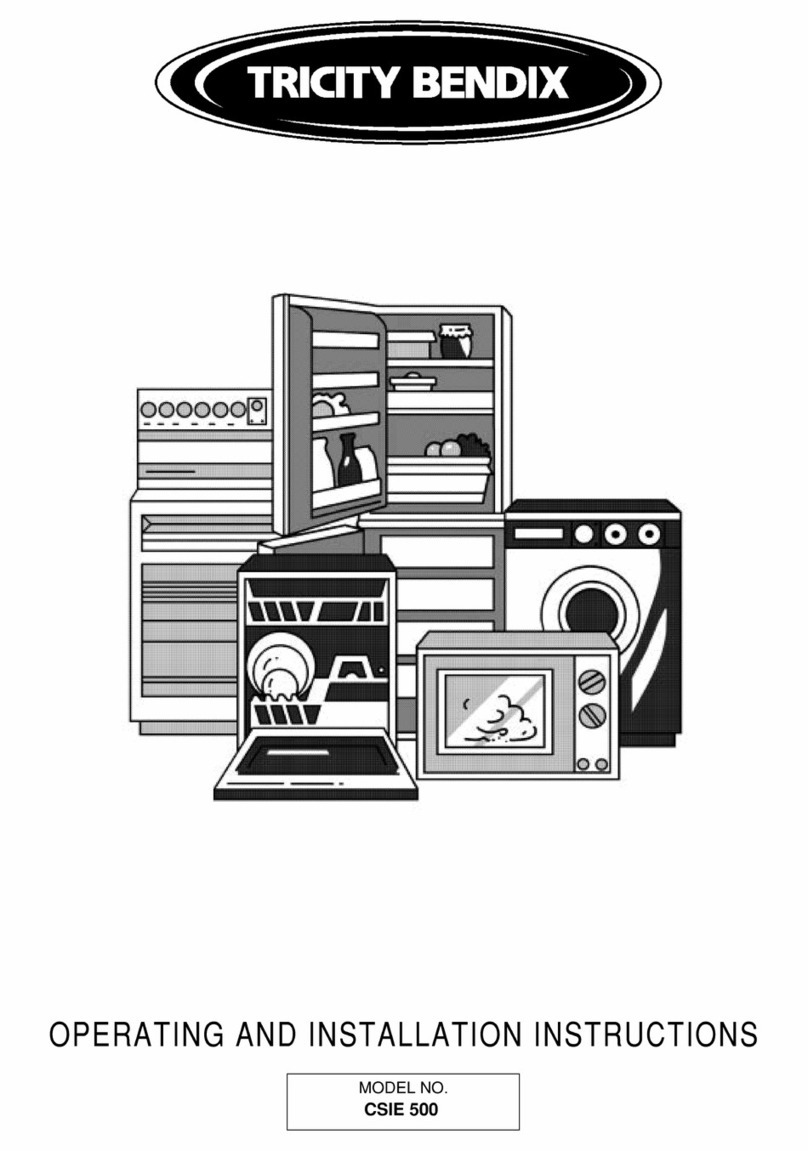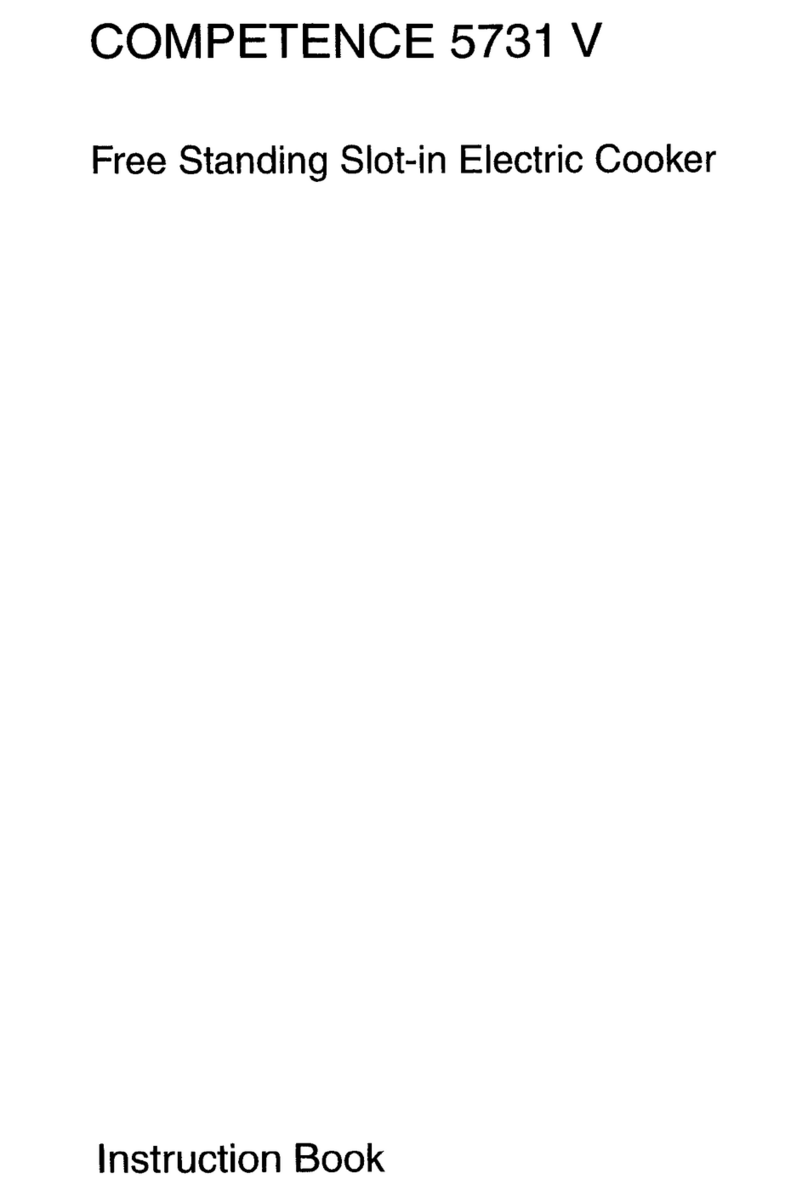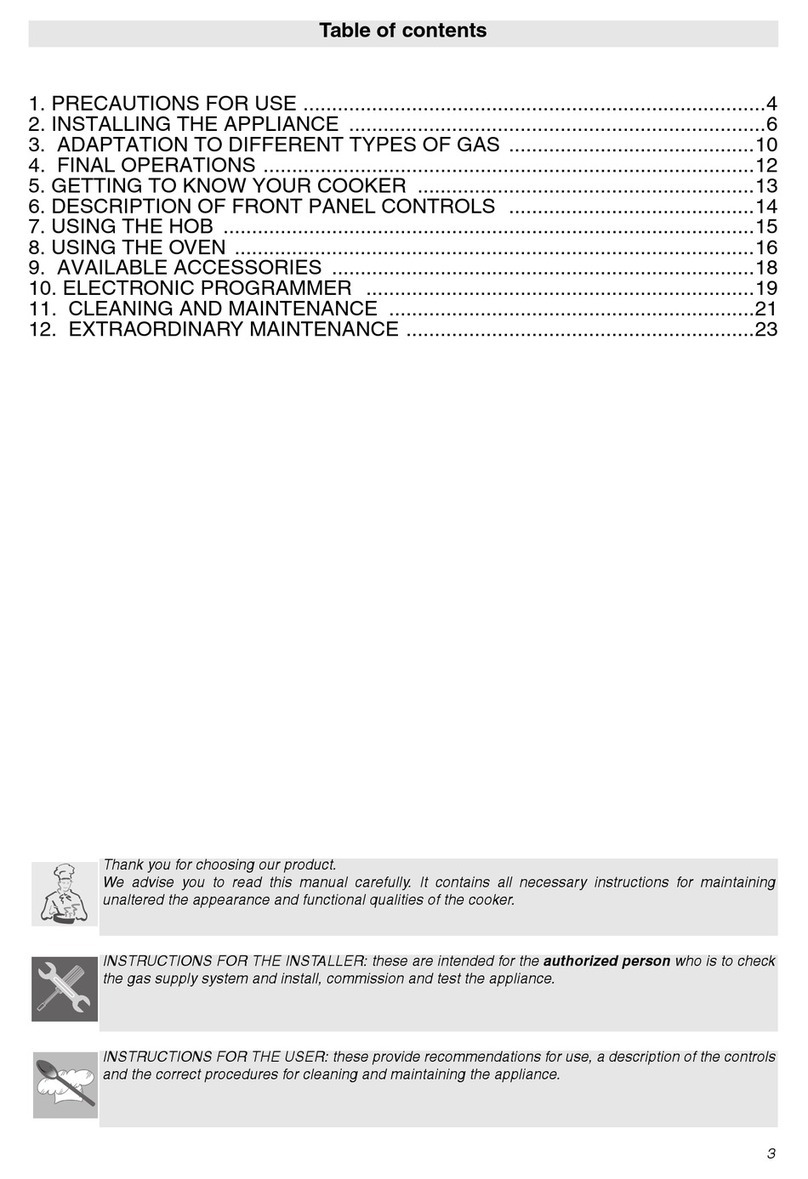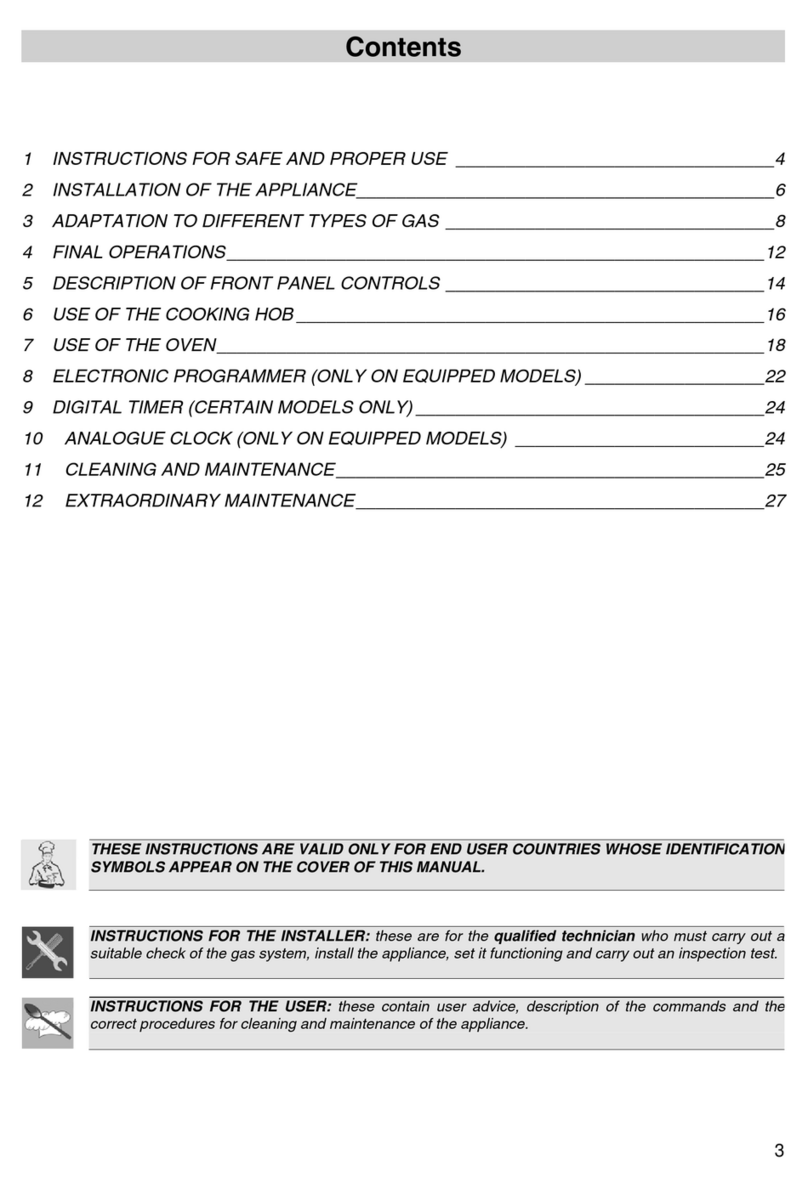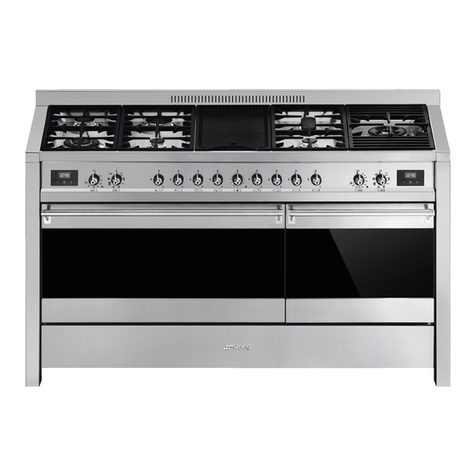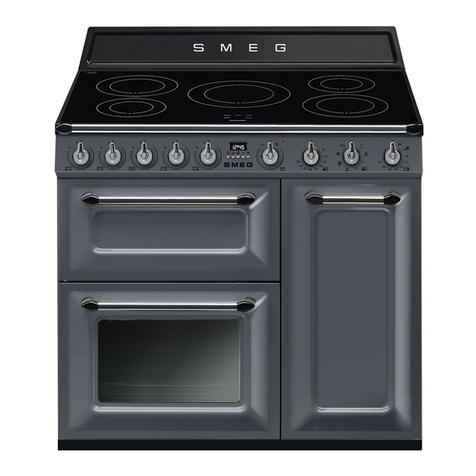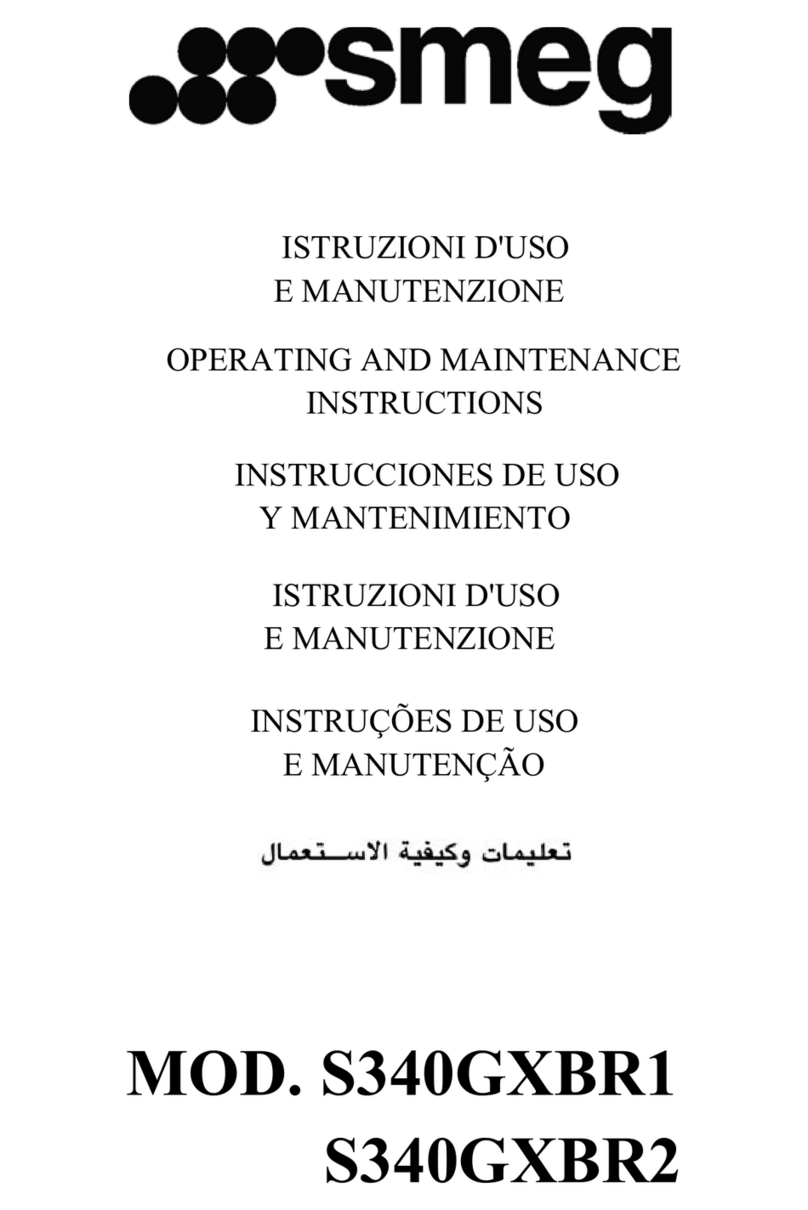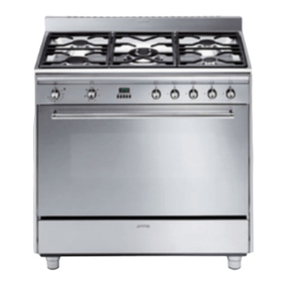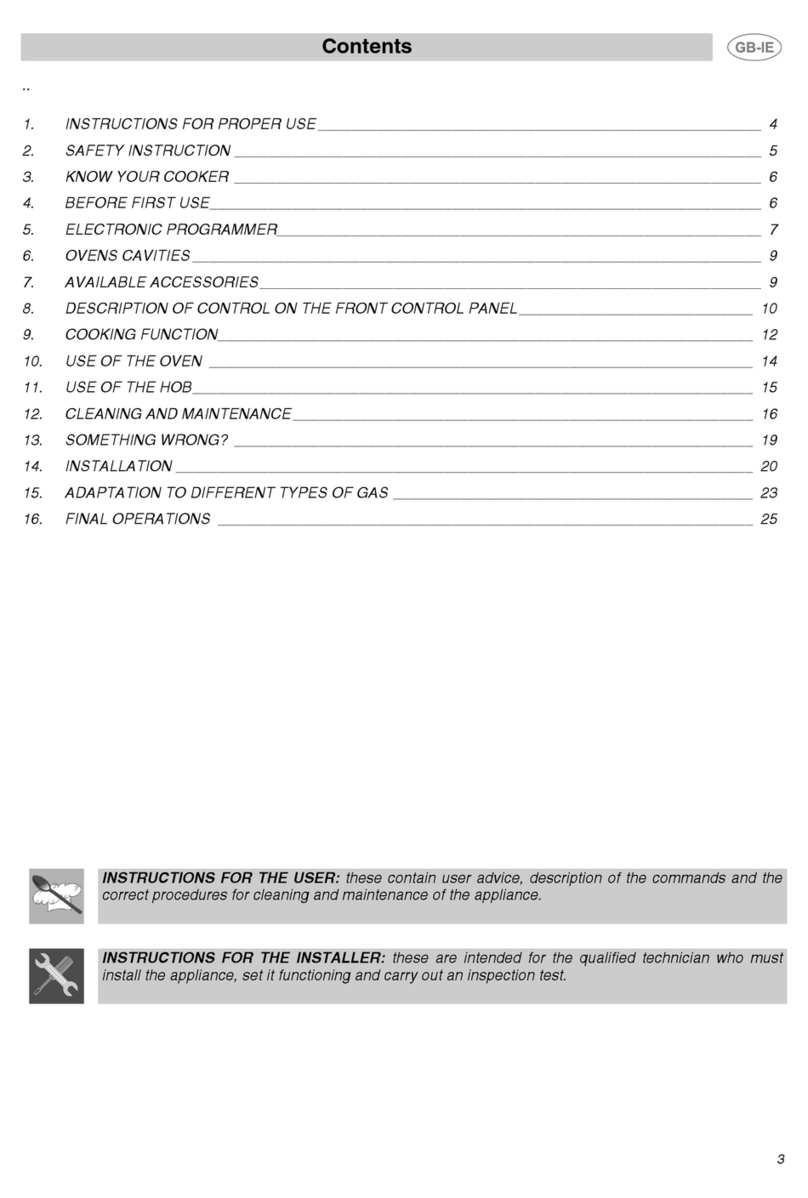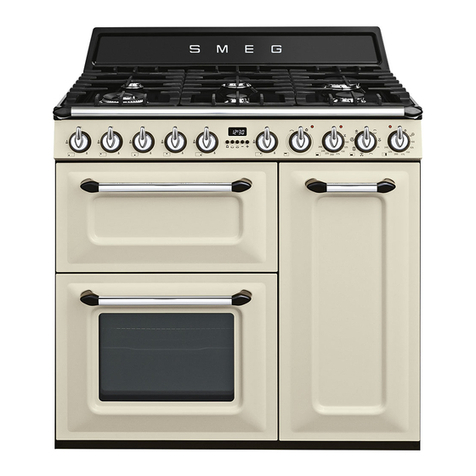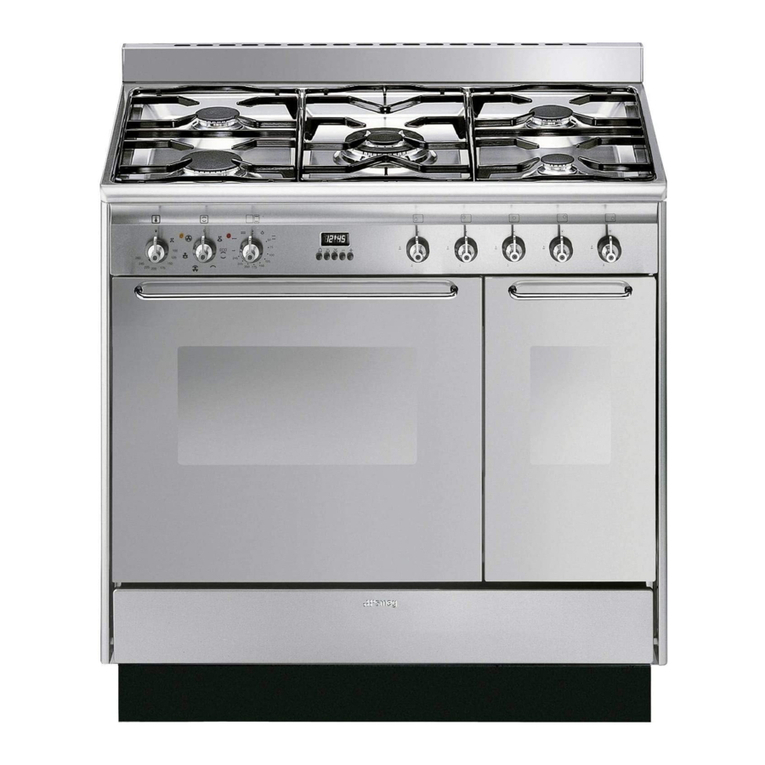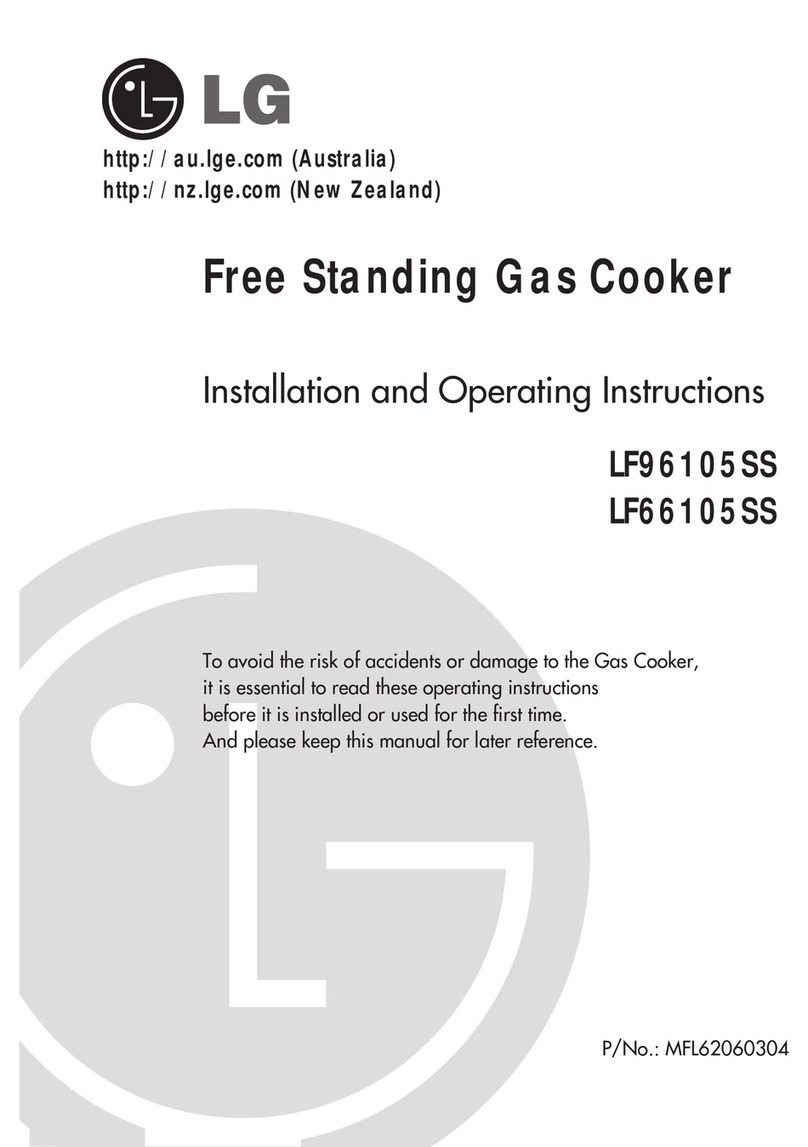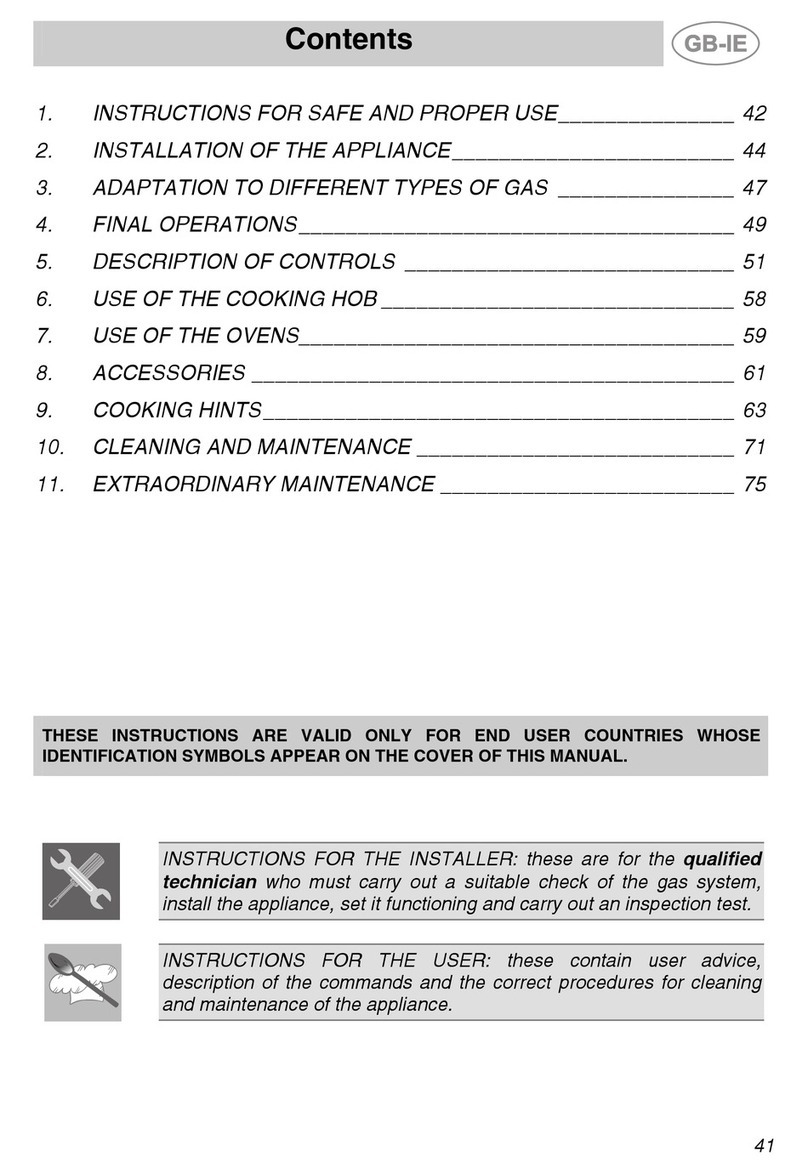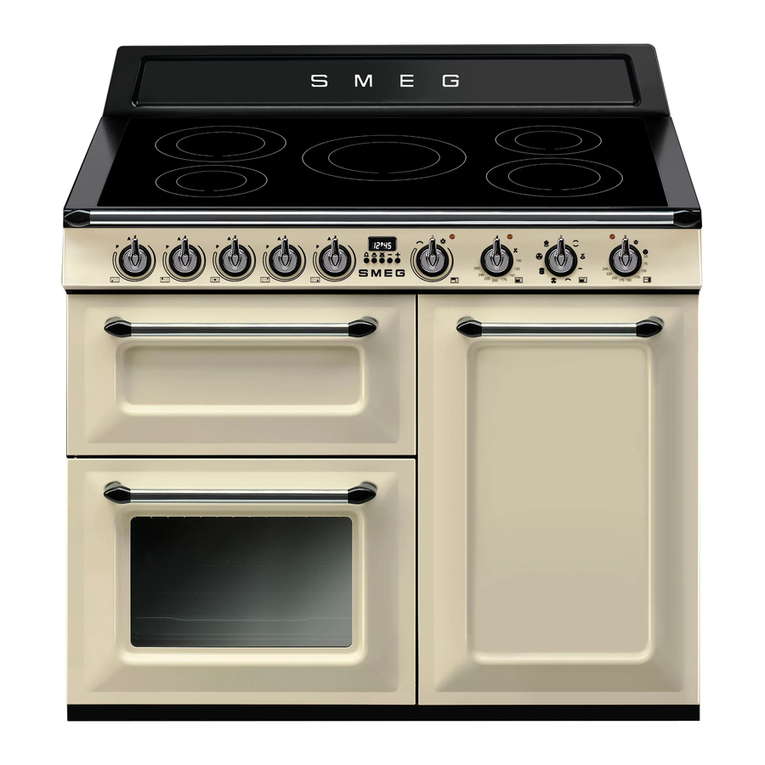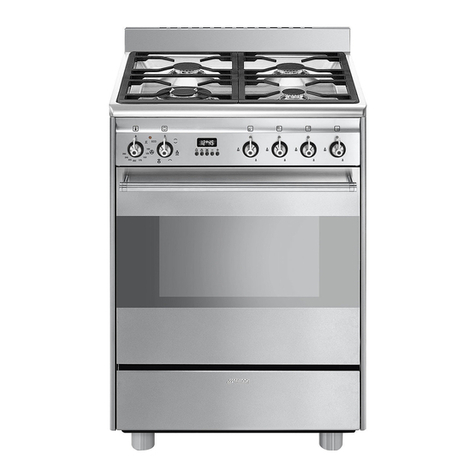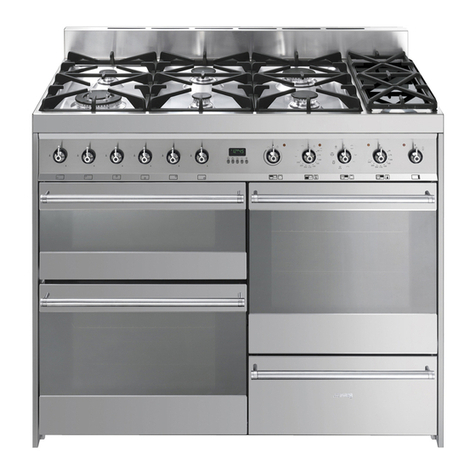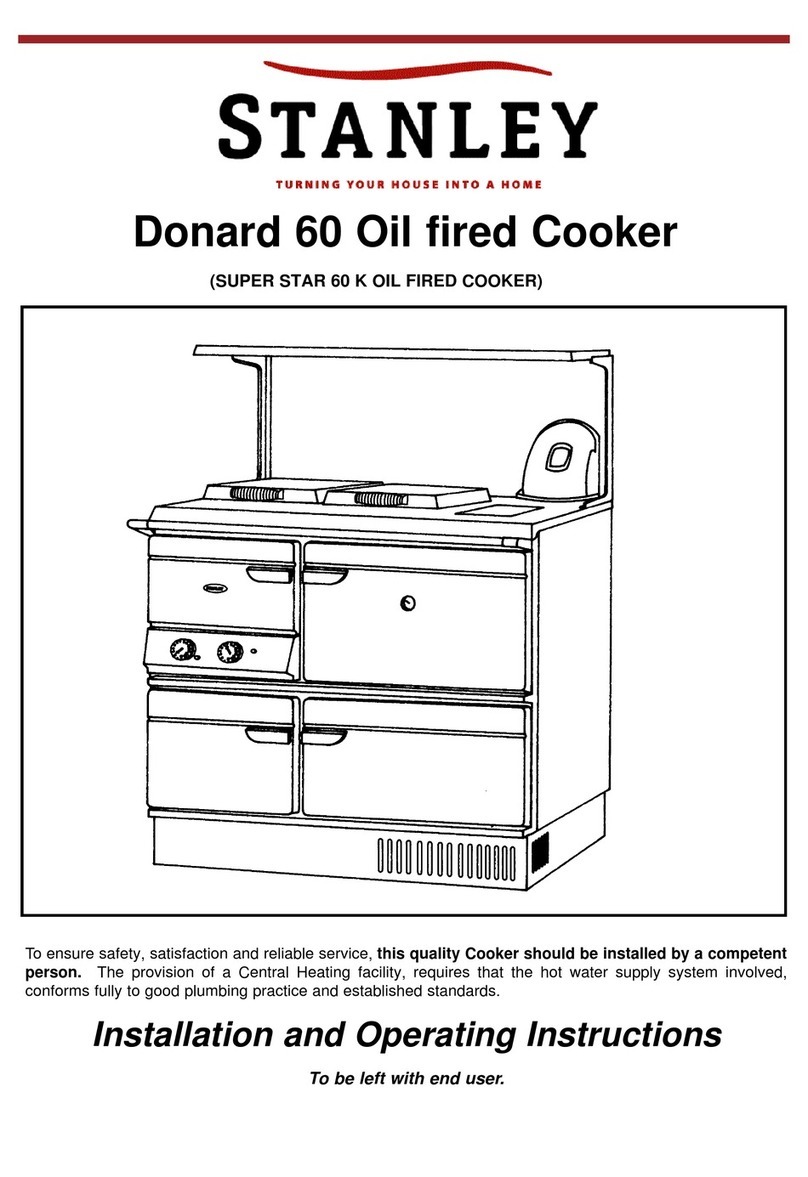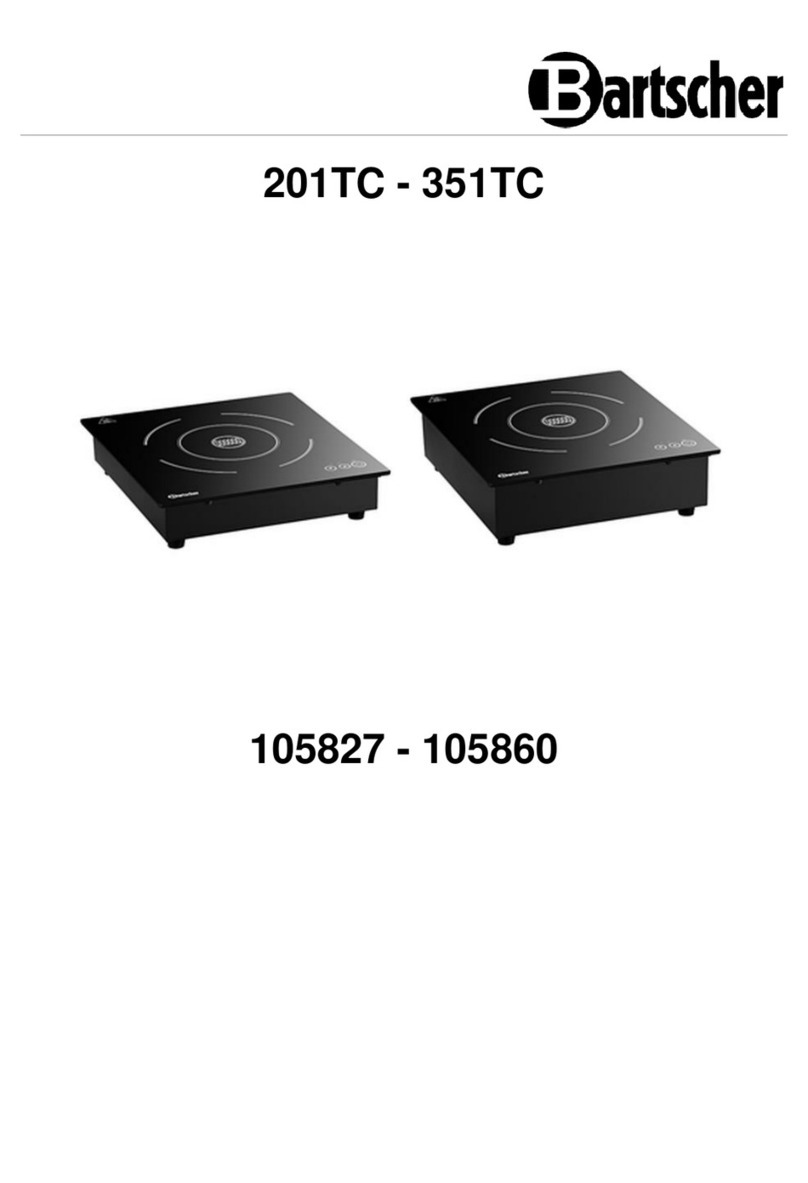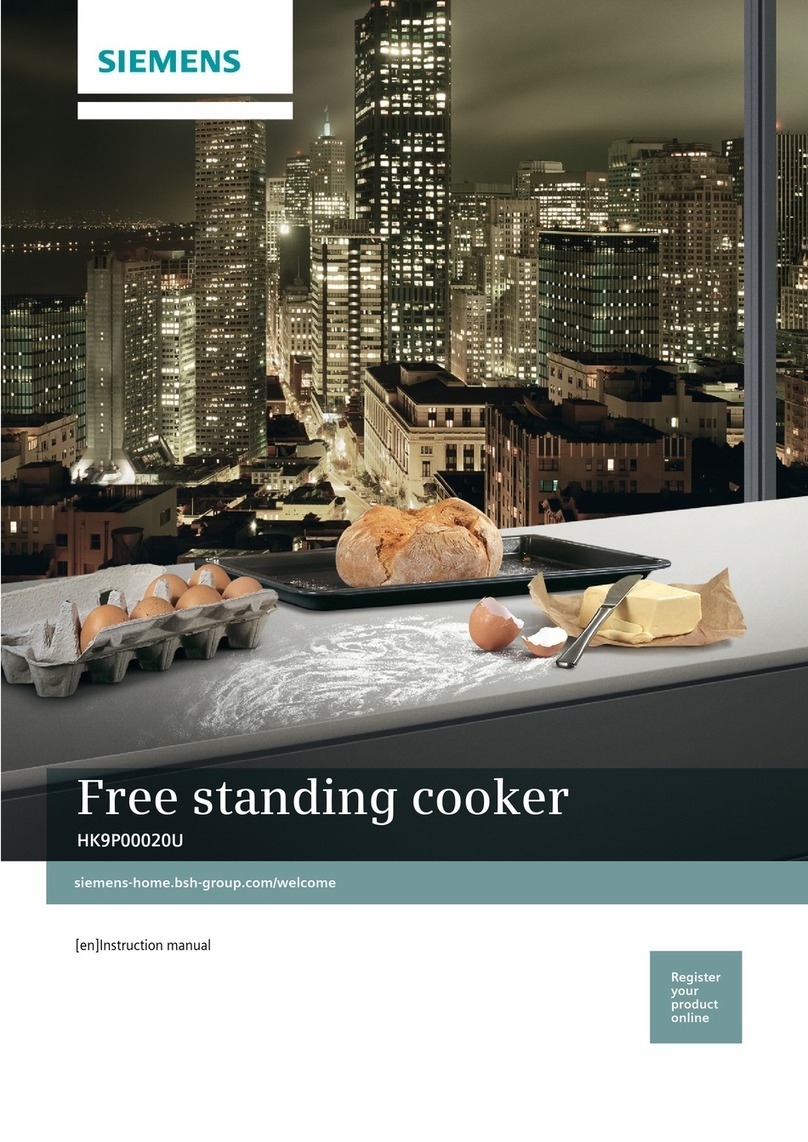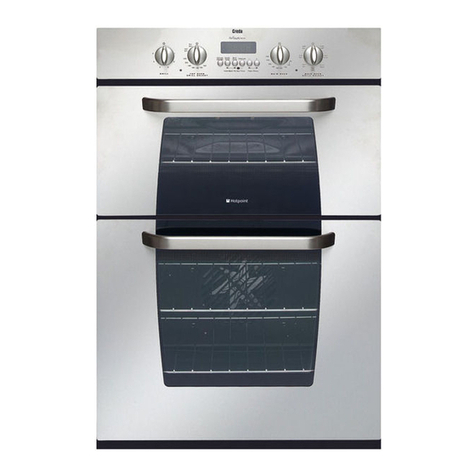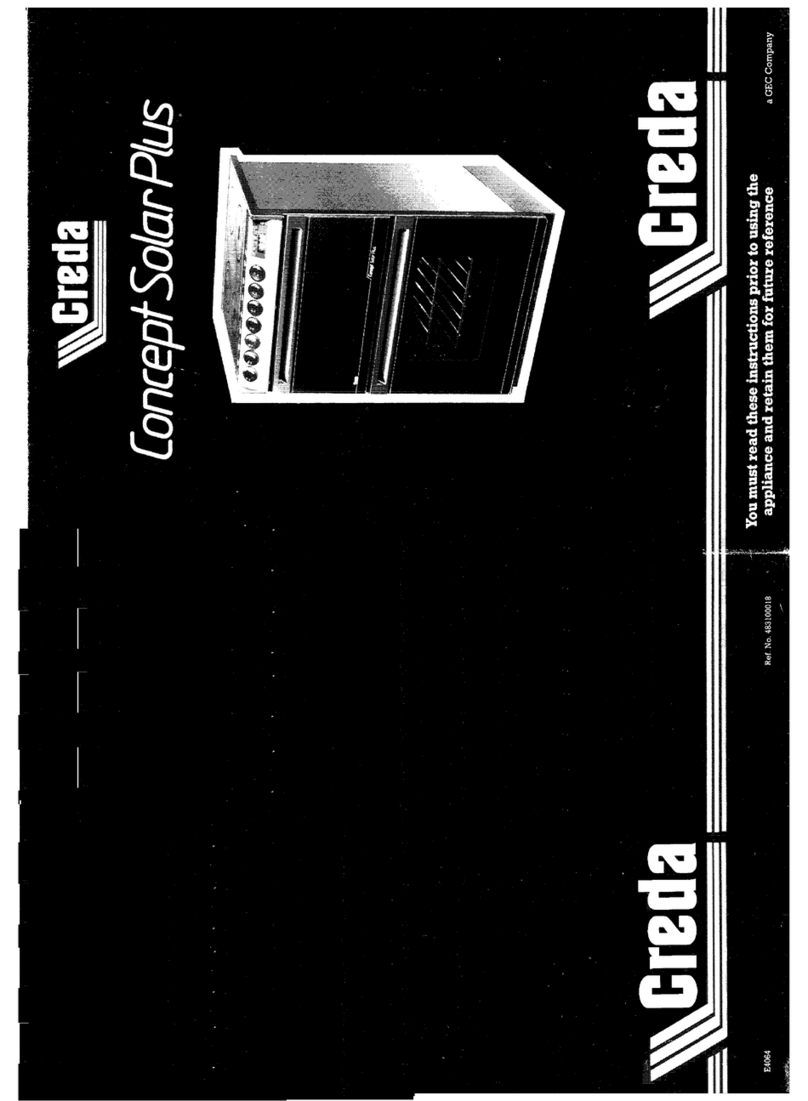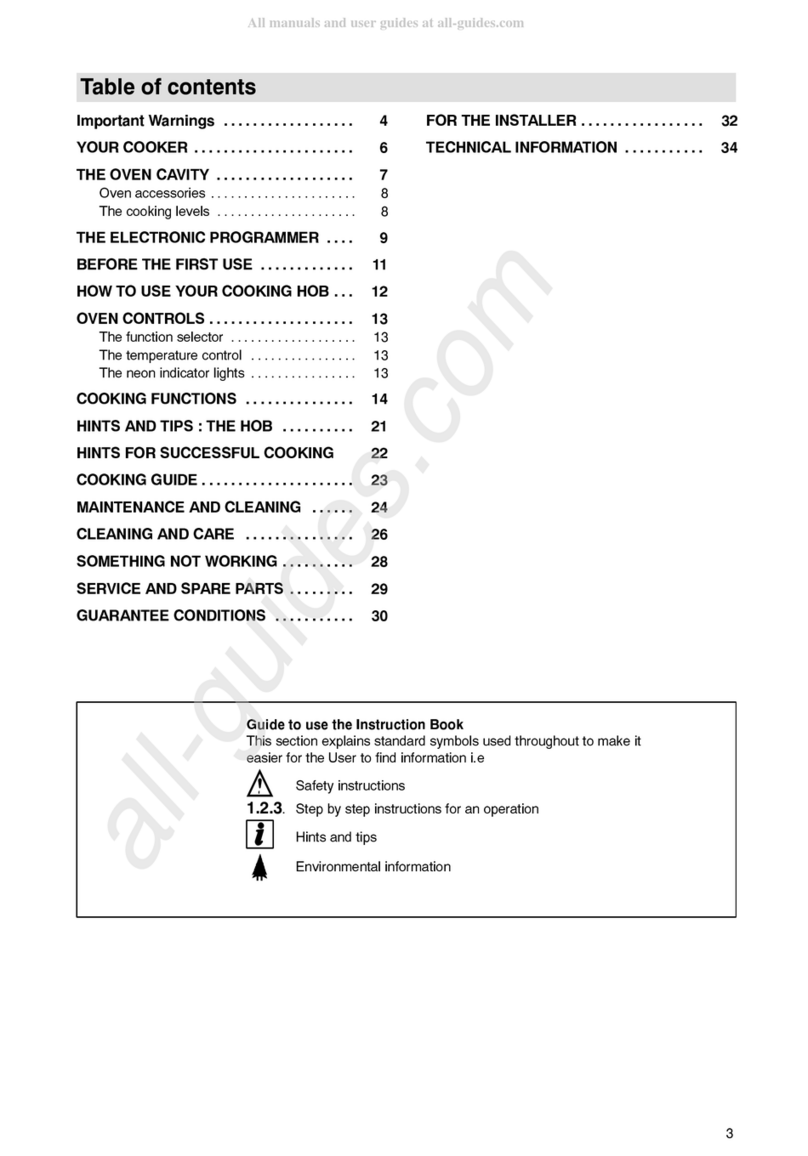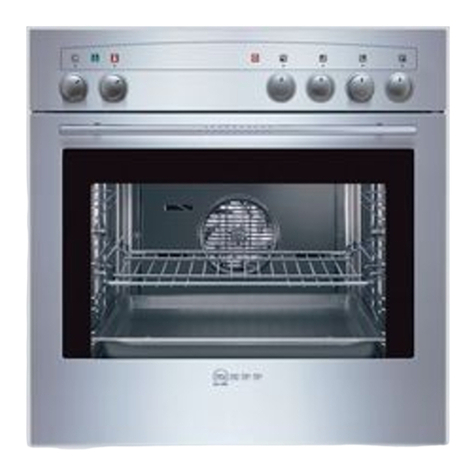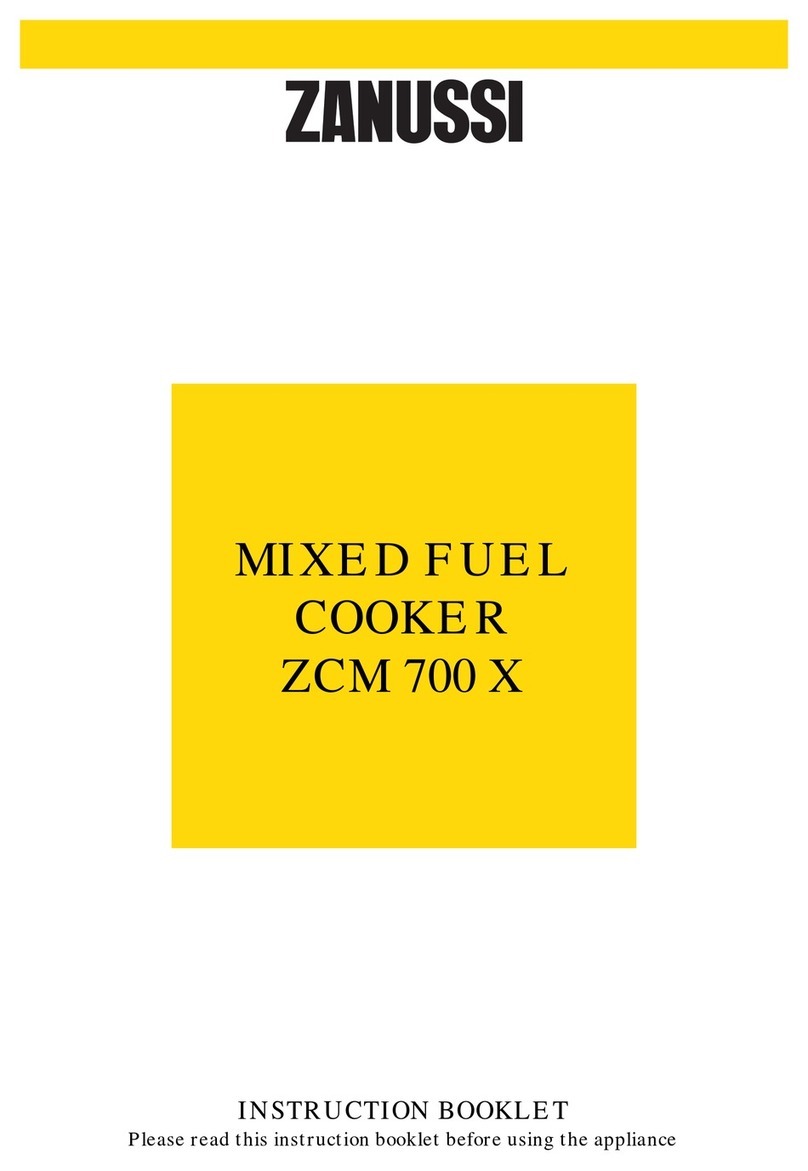
Instructions
55
EN
• The cooking process must always
be monitored. A short cooking
process must be continuously
monitored.
• Do not place metal objects, such
as dishes or cutlery, on the hob
surface during use as they may
overheat.
• Do not insert pointed metal
objects (cutlery or utensils) into the
slots in the appliance.
• Do not pour water directly onto
very hot trays.
• Keep the oven door closed
during cooking.
• If you need to move food or at the
end of cooking, open the door
5 cm for a few seconds, let the
steam come out, then open it fully.
• Do not open the storage
compartment (where present)
when the oven is on and still hot.
• The items inside the storage
compartment could be very hot
after using the oven.
• Do not use or store flammable
materials in the storage
compartment (where applicable)
or near the appliance.
• Do not use aerosols in the vicinity
of this appliance whilst it is in use.
• Switch off the appliance
immediately after use.
• Do not modify this appliance.
• Always use any necessary/
required personal protective
equipment (PPE) before
performing any work on the
appliance (installation,
maintenance, positioning or
movement).
• Before performing any work on
the appliance, switch off the
power supply.
• Have qualified personnel carry
out installation and assistance
interventions according to the
standards in force.
• Do not try to repair the appliance
yourself or without the intervention
of a qualified technician.
• Do not pull the cable to remove
the plug.
• If the power supply cable is
damaged, contact technical
support immediately and they will
replace it.


